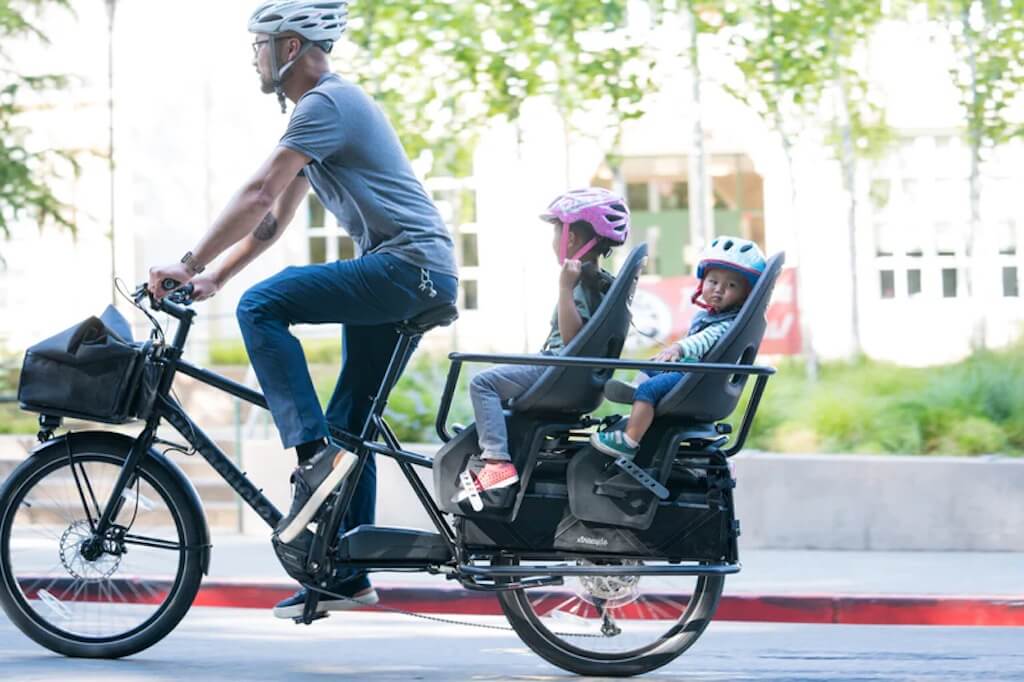Autumn Gear Guide
Find inspiration in our Gear Guide that will keep you out on your bike through wind or rain.
Download NowIf you’re considering getting a bike for transportation purposes, you may be wondering whether choosing a cargo bike or a traditional bike is the better option for you. Here are some things to think about before making a decision. Understand the Purpose and Benefits of Cargo Bikes Cargo bikes are specifically designed to carry heavy […]
If you’re considering getting a bike for transportation purposes, you may be wondering whether choosing a cargo bike or a traditional bike is the better option for you.
Here are some things to think about before making a decision.
Cargo bikes are specifically designed to carry heavy loads and transport goods. They are equipped with sturdy frames and large cargo areas, allowing you to transport groceries, packages, or even your children. The main benefit of cargo bikes is their ability to replace car trips, reducing traffic congestion and carbon emissions. They are also a great way to incorporate exercise into your daily routine. Traditional bikes, on the other hand, are more suited for personal transportation and recreational purposes. They are lighter and more agile, making them ideal for commuting or leisurely rides. Consider your specific needs and priorities to determine which type of bike is right for you.
When deciding between a cargo bike and a traditional bike, it’s important to consider your transportation needs and lifestyle. If you frequently need to transport heavy loads, such as groceries, packages, or your kids off to school, a cargo bike may be the better option for you. Cargo bikes are designed with sturdy frames and large cargo areas, allowing you to easily carry items without the need for a car. They are also a great choice for parents who want to transport their children. On the other hand, if you primarily use a bike for personal transportation or recreational purposes, a traditional bike may be more suitable with the option of a removable trailer when needed. Traditional bikes are lighter and more agile, making them ideal for commuting or leisurely rides. Additionally, consider your daily routine and how a bike fits into it. If you live in a hilly area or have a long commute, an electric cargo bike may be worth considering for added assistance. Ultimately, the decision between a cargo bike and a traditional bike depends on your specific needs and priorities.

The Xtracycle Stoker
When comparing cargo bikes and traditional bikes, it’s crucial to evaluate the cargo capacity and load capacity of each option. Cargo bikes are specifically designed to carry heavy loads, with larger cargo areas and sturdy frames. They often have built-in racks or baskets that can accommodate groceries, packages, or even children. On the other hand, traditional bikes typically have limited storage options, with smaller baskets or panniers. If you frequently need to transport bulky items or have a larger load to carry, a cargo bike would be the more suitable choice. However, if you primarily use a bike for personal transportation or light errands, a traditional bike with smaller storage capacity may be sufficient. Consider your typical transportation needs and the size of the loads you anticipate carrying to make an informed decision about the cargo and load capacity that best fits your requirements.
Another important factor to consider when choosing between a cargo bike and a traditional bike is the riding experience and handling. Cargo bikes are generally heavier and have a longer wheelbase, which can affect maneuverability and make them feel less agile compared to traditional bikes. They may also require more effort to pedal and navigate through tight spaces. On the other hand, traditional bikes are typically lighter and more nimble, allowing for easier maneuvering and faster acceleration. If you prioritize speed, agility, and the ability to navigate crowded urban areas, a traditional bike may be the better choice. However, if you value stability, comfort, and the ability to carry large loads without compromising control, choosing a cargo bike may be more suitable. Consider your riding preferences and the types of environments you will be cycling in to determine which option offers the best riding experience and handling for your needs.
Cargo bikes are suitable for short to medium distances and are well-suited for urban environments, where you may need to transport goods or children around the city. The variety of terrain might be limited depending on which cargo bike is purchased. Whereas a traditional bike is more versatile and can handle longer distances and various terrains, making them great for recreational rides and longer commutes.

Traditional bikes are easier to store, as they can often be hung on a wall or placed in a standard bike rack. Cargo bikes, particularly larger models, can be challenging to store due to their size. They may require more space, and not everyone has enough room to store them indoors.
When deciding between a cargo bike and a traditional bike, it’s important to consider the cost and maintenance requirements of each option. Cargo bikes tend to be more expensive upfront due to their specialized design and additional features for carrying loads. They also require more maintenance, as the added weight and strain from carrying heavy loads can put extra stress on the bike’s components. This may result in more frequent repairs and replacements. Traditional bikes are generally more affordable and have lower maintenance costs. They have fewer specialized parts and are easier to maintain and repair. Additionally, traditional bikes are widely available, making it easier to find affordable replacement parts if needed. Consider your budget and willingness to invest in maintenance when making your decision.
Find inspiration in our Gear Guide that will keep you out on your bike through wind or rain.
Download Now
Leave a comment